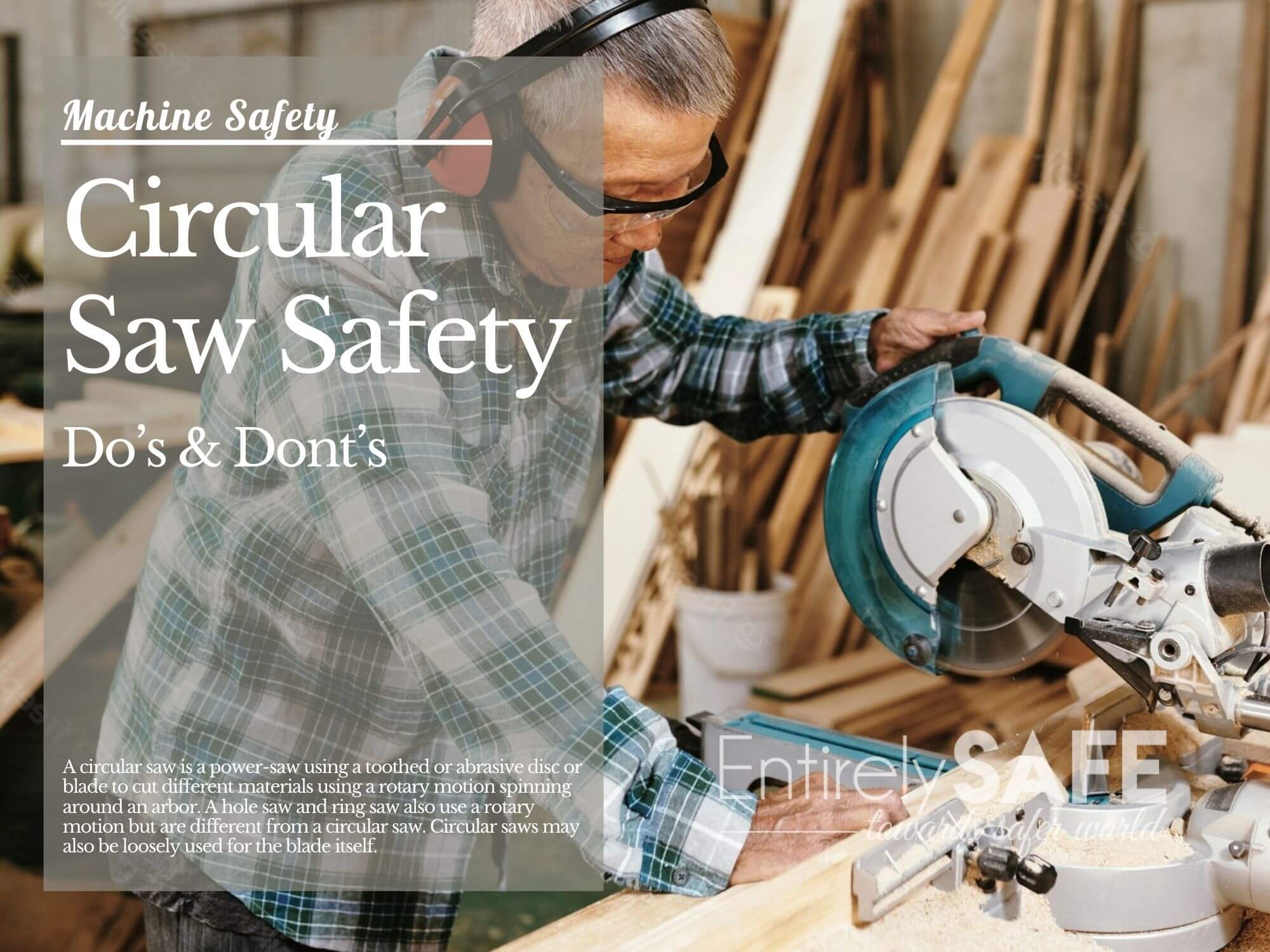Circular Saw Safety

A circular saw is a power-saw using a toothed or abrasive disc or blade to cut different materials using a rotary motion spinning around an arbor. A hole saw and ring saw also use a rotary motion but are different from a circular saw. Circular saws may also be loosely used for the blade itself.
Installation
- …
Pre-Job Inspection
- Check the retracting lower blade guard to make certain it works freely.
- Ensure that the blade that you have selected is sharp enough to do the job. Sharp blades work better and are safer.
- Check the saw for proper blade rotation.
- Set the depth of the blade, while the saw is unplugged, and lock it at a depth so that the lowest tooth does not extend more than about 0.3 cm (1/8″) beneath the wood.
- Keep all cords clear of cutting area.
Safety Guards
- …
PPE
- Wear safety glasses or goggles, or a face shield (with safety glasses or goggles).
- Wear an approved respirator or dust mask when exposed to harmful or nuisance dust.
- Use appropriate hearing protection equipment in noisy areas.
Operating Circular Saw
- Circular saws are designed for right-hand operation; left-handed operation will demand more care to operate safely.
- Check the retracting lower blade guard frequently to make certain it works freely. It should enclose the teeth as completely as possible, and cover the unused portion of the blade when cutting.
- Check that the retracting lower blade guard has returned to its starting position before laying down the saw.
- Keep upper and retracting lower blade guard clean and free of sawdust.
- Allow the saw to reach full power before starting to cut.
- Use two hands to operate saws – one on a trigger switch and the other on a front knob handle.
- Keep motor free from accumulation of dust and chips.
- Select the correct blade for stock being cut and allow it to cut steadily. Do not force it.
- Secure stock being cut to avoid movement.
Maintenance
- Before making adjustments or before cleaning accumulated swarf, switch off and bring the machine to a complete standstill.
- If maintaining or making repairs, use lockout procedures where necessary.
- Keep the machine properly oiled and serviced.
- Disconnect power supply before adjusting or changing the blade.
Don’ts
- Do not hold or force the retracting lower guard in the open position.
- Do not place your hand under the shoe or guard of the saw.
- Do not over tighten the blade-locking nut.
- Do not twist the saw to change, cut, or check alignment.
- Do not use a saw that vibrates or appears unsafe in any way.
- Do not force the saw during cutting.
- Do not cut materials without first checking for obstructions or other objects such as nails and screws.
- Do not carry the saw with a finger on the trigger switch.
- Do not overreach. Keep proper footing and balance.
- Do not rip stock without using a wedge or guide clamped or nailed to the stock.

